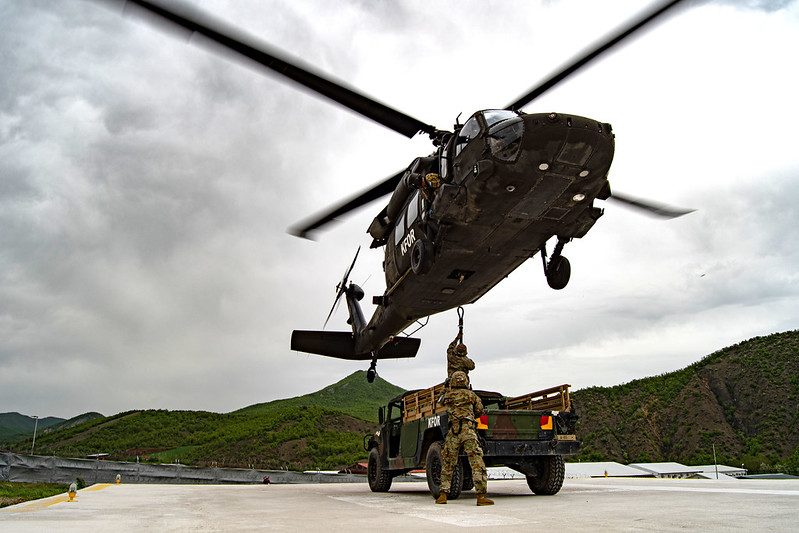With the recent parliamentary election in Kosovo, key issues such as interethnic relations, poverty, unemployment, and prices for essential supplies continue to dominate political discourse. Despite the need for collaboration in a proportional representation electoral system and guaranteed legislative seats for ethnic minorities, the diverse parties of the Kosovar legislature have struggled with consensus.
Among the different political groups, tensions continue to persist along ethnic lines. The Serb List, the largest Serbian party, was banned from participating in the election by the incumbent government due to strong links with Serbia, Russia, and its refusal to recognize Kosovo’s independence. The decision was reversed by the ECAP, yet it signifies the constancy of political conflict. Socially, violent flare-ups continue, as evidenced by the attack on Kosovo Police in September 2023 and the explosion from late last year. From the simmering tensions of the election period, it is evident that long-term issues in the region continue to prevent peace.
Following NATO’s intervention in Kosovo, Western officials promoted the success of the intervention and the region’s relative stability. However, more than twenty-five years later, the same issues that once triggered the instability in Kosovo in 1999 continue to trouble the region. The persistence of such issues calls for a re-examination of NATO’s intervention, and what can really be defined as a ‘success.’
Proponents of the intervention may point to the relative stability Kosovo has experienced since. The alliance was able to hinder the capacity of the Serbian army by damaging key military infrastructure and weaponry, including 122 battle tanks. In comparison to the UN’s response, NATO’s intervention was effective in assisting with the end of ethnic violence. Kosovo now enjoys independence that is recognized by ninety countries, including all members of the G7. Militarily, the intervention can be perceived as successful.
However, such reasoning fails to account for the unintended consequences of NATO’s military campaign against the Federal Republic of Yugoslavia. One of the most significant outcomes of the intervention is the adverse effects faced by civilians during NATO’s air strikes. After air bombings began, the ethnic violence in the region increased at an alarming rate. Prior to the intervention, approximately 2500 civilians had been killed during the conflict. Alarmingly, an additional 10,000 were killed during the air bombings. An estimated twenty bombs went astray, killing civilians and damaging infrastructure. While the exact numbers are unknown, the number of civilians killed by NATO’s bombs is estimated to be between 488 and 527 people. The deaths occurred in ninety documented incidents. Instead of slowing or stopping the violence, NATO’s intervention inadvertently emboldened military actions and encouraged an increase in violence during this time.
Failed military targets carried political consequences as well. During the bombings, NATO mistakenly destroyed the Chinese embassy in Belgrade. This escalated tensions between the alliance and China due to the attack on Chinese sovereign territory and the killing of Chinese officials. The large-scale destruction of infrastructure also created a long-term financial burden for the alliance, who supported the region’s rebuilding.
Political factors in NATO’s intervention also reinforced the dangers of moral hazard, where groups feel encouraged to engage in violent means to illicit harsh state retaliation, in turn attracting an international response. The growing norm of humanitarian intervention encourages this behaviour, as states only intervene when violence begins. In Kosovo, ethnic Albanians (particularly the KLA) may have been motivated to rebel as they expected harsh state retaliation, in turn attracting an international response that would achieve their goal of independence.
NATO’s intervention produced a one-sided outcome entirely in favour of this, making Kosovo safe for ethnic Albanians, but unsafe for Serbians. The protection awarded to Kosovars in the establishment of their state was unfortunately not reciprocated toward the Serbian minority population. Thus, the risk of violence between them remains high. By only intervening when the violence had started, NATO’s actions reinforced the concept of moral hazard, inadvertently encouraging future violence.
NATO first intervened in Kosovo to promote its values and gain influence in the region. While the Alliance was successful in gaining support in Kosovo, it also drove Serbia closer to Russia. The very idea or presence of NATO itself in Serbia has become synonymous with a symbol of Western exceptionalism, signaling a need for a shift in how NATO meaningfully engages with the country.
To rectify this, NATO has made attempts to meaningfully engage with Serbians. However, public opinion within Serbia indicates consistently low support for NATO. In 2022, 65% of the Serbian population viewed NATO as Serbia’s enemy. Serbia has been a candidate for EU membership since 2012, indicating a willingness to join the wider European community. Such involvement should be more encouraged, rather than the stagnation and resistance we currently see in their prospects for membership.
Polling today that indicates the stark contrast between Kosovo and Serbia’s approval rating of NATO leadership signifies the legacy of the NATO intervention and its long-term effects on ethnic relations within and outside of Kosovo. Most would agree that militarily, NATO did great work in stopping the conflict of 1999. However, its lack of urgency and intervention in other humanitarian crises such as Rwanda and Syria, suggest that the alliance’s principles aren’t being applied uniformly. While NATO succeeded in achieving its mission objectives in its air campaign, the civilian casualties and persistent ethnic tensions in the region pose a greater question of how success in a humanitarian intervention can truly be defined.
Photo: Kosovo Force Regional Command-East Task Force Aviation Soldiers train personnel from KFOR RC-E’s Maneuver Battalion (2020) via Flickr. Licensed under C.C. by 2.0.
Disclaimer: Any views or opinions expressed in articles are solely those of the author and do not necessarily represent the views of the NATO Association of Canada.





